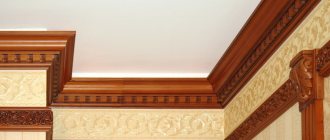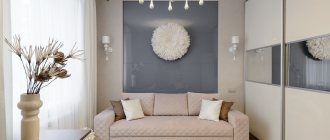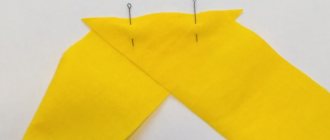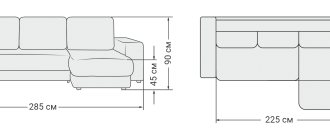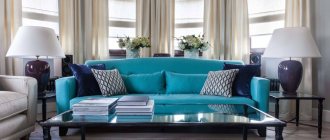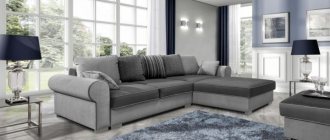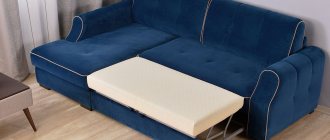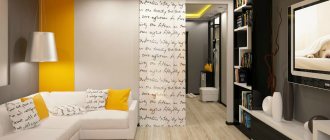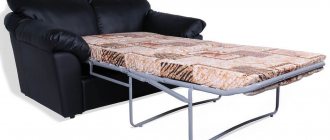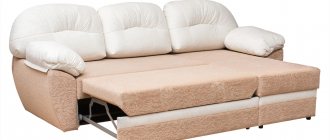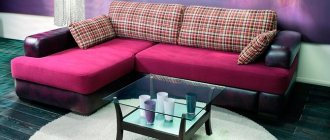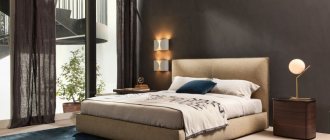Modern European covers for sofas and armchairs will help you update the appearance of upholstered furniture without much expense and protect it from negative influences in the future. Such capes are made of durable and elastic fabrics and are complemented with elastic bands. It is not necessary to choose Euro-covers for a specific sofa: the main selection criterion is the size of the furniture. The shape of the armrests, the presence of headrests or other features of the models do not affect the possibility of using universal Euro blankets. Secondary criteria for selecting products include the type of material from which they are made and the color of the fabric. Owners should also take into account the rules for using and cleaning euro capes: following the recommendations and requirements of the manufacturer will help to easily maintain the attractive appearance of the new product.
Benefits and Features
European-style covers for upholstered furniture are truly universal. Models are distinguished by purpose (chair or sofa) and size. At the same time, the purchased Euro chair cover is suitable for any models of chairs, regardless of their size, back height or seat width. Also, the selected eurocover for a two-seater sofa without armrests can be used to protect any furniture from this category, regardless of its upholstery materials, the presence or absence of legs. This feature of European covers is achieved through the use of auxiliary elastic bands. They allow you to cover old furniture with a cape so that there are no waves or constrictions on its surface. In addition, European covers are made from wear-resistant fabric, which will retain its original appearance for a long time.
Advantages
The main advantage of using a Eurocover is its efficiency. Thanks to such a cover, you can easily and quickly update the look of old upholstered furniture without changing its upholstery. Other advantages of the products include:
- ease of choice (by type and size);
- reliability (the fabrics used for sewing covers are in no way inferior in strength to furniture upholstery, they are resistant to mechanical stress);
- ease of cleaning (in case of contamination, owners will need to remove the cape and wash it in accordance with the manufacturer’s requirements);
- ease of putting on (most models can be put on upholstered furniture in just 5-10 minutes);
- variety of cover designs (due to the use of different fabrics and tailoring in different styles).
Despite the high efficiency of the Euro-cover, it will not be able to hide the unevenness of damaged leather or suede, worn-out (or sagging) filling of upholstered furniture.
Flaws
A significant drawback of Euro-covers for upholstered furniture is their high cost. High-quality and durable models, resistant to damage, which can actually be used even in homes where animals are kept, are expensive. Also, Euro-covers are not suitable for use on leather sofas and armchairs, since they slide over the upholstery without a strong hold. Some buyers find disadvantages in the monotony of the interior created by the use of durable covers. But such a problem can be easily solved by “decorating” upholstered furniture with sofa cushions.
One of the disadvantages is the large number of cheap crafts. Capes that cost less are sewn from less durable fabrics and, accordingly, are quickly wiped off and covered with puffs. Therefore, you should choose models with special attention.
Jacquard
Refers to a type of mixed fabrics. Consists of cotton, polyester and elastane. This fabric has increased wear resistance, high quality and impeccable appearance. Jacquard does not warp and holds its shape well.
The main disadvantage of jacquard is that it is not resistant to damage. If you have animals in your home, then this option is not for you.
Sources
- https://mebeldizajn.ru/chexly-na-divany-i-kresla/
- https://HouseChief.ru/evrochekhol-na-divan.html
- https://tekstil.guru/odeyala/chehol-na-divan
- https://CozyBlog.ru/mebel/chehol-na-divan.html
- https://VseShokeri.ru/shite/pokryvalo-na-divan-svoimi-rukami-2.html
- https://mebel-expert.info/mebel-svoimi-rukami/krovati-i-divany/evrochehly-na-uglovoj-divan
- https://mblx.ru/napolnenie/166-evrochehly-na-myagkuyu-mebel-divan.html
- https://poztello.ru/pokryvala/243-chehly-na-divan.html
- https://oxko.ru/luchshie-chehly-dlya-myagkoy-mebeli/
- https://oboiman.ru/inside/evrocehol-na-divan-54-foto-cehol-universalnyj-otzyvy.html
- https://russianstartuprating.ru/tekstil/chekhol-na-divan.html
- https://mebel-sovet.ru/obivka-i-chehly/398-chekhly-na
- https://proffstroygroup.ru/dekor/nakidki-na-myagkuyu-mebel.html
- https://mebeldec.ru/chexol-na-divan/
Materials
Modern Europlaids are made from the following types of fabrics, differing in their characteristics and features:
- chinil: characterized by a soft surface, with different types of weaving it may have virtually no relief or be similar to plush;
- jacquard: dense material with patterned weaving, well suited for use in apartments where pets are kept;
- microfiber: soft and elastic fabric, the best option for protecting the upholstery of the sofa and creating special comfort in the relaxation area;
- pleated: distinguished by a dense weave of threads, has an inconspicuous pattern;
- polyester: a material with a fairly tight weave, but little wear resistance.
Color varieties
When choosing the type of colors and patterns for a sofa cover, we must not forget about the features of the room for which the model is being selected. Plain products are optimal for interiors that include patterned trim and eye-catching decor. The most fashionable shades include beige, burgundy, dark blue, light blue and light green. These colors will harmoniously fit into the design of the room and highlight the relaxation area with a sofa. Many europlaids are made from fabrics with patterns: they are more suitable for rooms with a neutral design. Models with large ornaments, in the same color scheme as the background, are suitable for any room. Small, discreet designs and ornaments will be appropriate in both small and large rooms. The presence of a contrasting combination of backgrounds and patterns, regardless of their size, allows the use of Euro-covers in spacious rooms.
There are special “children’s” colors of European covers with animals and plants.
Choice according to interior style
Observing the basic features of the style in which the model will be used will help you choose the right eurocover for your home from the catalog. You can easily select a product using the following directions:
- urban and modern: models without frills in light gray, gray-lilac or light blue colors are good;
- Art Deco: dark models with contrasting light patterns will emphasize the style; it is possible to purchase a model with a frill;
- classic: models in dark green, beige or brown with any tailoring are suitable for the direction;
- Scandinavian: a light gray or white European-style case without frills will complement this style well;
- Provence: light models with dim stripes or small floral patterns are preferred;
- rustic, country and loft: beige, light or rich brown covers are ideal for these styles;
- modern and high-tech: for discreet styles, it is better to choose a dark brown or black case with minimal relief.
Rules of care
Caring for the Eurocover is simple and involves following a number of simple recommendations. General care rules:
- Before washing, the product must be turned inside out;
- use the delicate wash mode;
- do not increase the temperature above 40 C;
- do not use softeners or bleaches;
- dry only at room temperature;
- do not iron or steam.
For some models, the manufacturer may indicate a number of additional requirements , which are always specified in the operating and maintenance instructions. You should familiarize yourself with such features in advance.
Types and sizes
The main difference between the European seat covers produced is their stylistic presentation. Such models can be complemented at the bottom with a neat frill or have a flat side at the bottom, equipped with an elastic band. For sofas, a larger number of European covers of the following types are produced:
- for models without armrests;
- for sofas with armrests;
- for corner upholstered furniture.
The sizes of the covers should be selected according to the size of the seat itself. There are Euro-covers for 2-seater, 3-seater and 4-seater sofas. For corner models, products designed for 4-seat upholstered furniture are suitable. Therefore, when selecting the required European cover for a corner, you don’t have to take into account which side the long part of the seat is located on. The only exceptions are designer sofas made in non-standard sizes.
Comparison table of characteristics
The general table below shows the characteristics of the described cases. By comparing them, it will be easier for you to choose the ideal option.
| Model | Number of items, pcs. | Compound | Purpose | With armrests |
| KARNA Roma cover for three-seater sofa | 1 | cotton 60%, polyester 38%, elastane 2% | sofa | + |
| Case BULSAN double | 1 | cotton 40%, polyester 60% | double sofa | + |
| Medezhda cover for three-seater sofa Brighton | 1 | cotton 60%, polyester 40% | sofas | + |
| Bonprix Crinkle Case | 1 | 60% cotton, 35% polyester, 5% elastane | armchair | + |
| Set of covers for upholstered furniture Burumcuk “Bulsan” | 3 | 60% polyester and 40% cotton | sofa and two armchairs | + |
| Cover for sofa and 2 armchairs JUANNA | 3 | 100% Polyester | sofa and two armchairs | + |
| KARNA Milano cover for left corner sofa | 1 | cotton 60%, polyester 38%, elastane 2% | corner sofa | +/- |
How to choose and use a case
A correctly selected Eurocover model guarantees its appropriate appearance in a specific interior and long service life. It is recommended to select products according to the following criteria:
| Type of model and its dimensions | Incorrectly measuring furniture will lead to the purchase of a cover that will not fit tightly to the base or will not be able to cover a large sofa. |
| Material | For apartments where animals are kept, it is worth choosing the densest fabrics with increased wear resistance. |
| Stylistics and colors | The chosen model should fit well with the color scheme of the room and complement it attractively. |
After purchasing, it is recommended to wash the cover and only then put it on the furniture. This will allow you to prepare the purchased Eurocap for home use.
How to take measurements correctly?
If you can find a suitable model of European cover for an armchair and sofa by simply assessing its appearance, then you need to be very careful when choosing a product of the appropriate size. To select the correct cape, measure the back of the furniture (top or front). It is better to use a tape measure for work or measure with a centimeter (the help of a second person may be required). According to the obtained measurement, the model is selected:
- with a back length of up to 1.6 m, a Euro-cover for two-seater sofas is suitable;
- a back length of about 2.2-2.5 m will indicate the need to purchase a model for a three-seater sofa;
- If the back length is about 3.5-4 m, you should purchase a Euro-cover for a four-seater sofa.
The sizes of covers for corner sofas are selected in a similar way: depending on the sum of the lengths of the “large” and “small” backrest.
How to wear?
The instructions for putting on European-type covers are quite simple and do not require any special skills. If the sofa is close to the wall, then you must first move it away to put on the cover. The work itself is carried out according to the following scheme:
- The cover unfolds on the surface of the sofa.
- The upper part of the cover is draped over the back, then aligned along one corner, stretched across the back and aligned along the second corner.
- The armrests are covered with fabric: you need to cover them with specially designated volumetric “pockets”.
- The fabric is leveled behind the back of the sofa and along the entire perimeter at the bottom. For corner sofas, there is an elastic insert, which, after straightening the fabric, is tightened and fixed on the inner leg (located between the short and long parts of the sofa).
- Between the seat and back, as well as the seat and armrests, rollers or parallelepipeds made of foam rubber are pushed.
Care Tips
Despite all the practicality of European covers, only proper cleaning and washing will help preserve their original appearance and condition. Basic product care requirements include:
- Removing dust and hair with a vacuum cleaner without using hard brushes (they can damage the fabric).
- Wash by hand or on a gentle cycle in a washing machine without using bleach. It is also recommended to wash the covers without other items (even identical in color).
- For soft “fluffy” covers, washing is carried out only after turning the product inside out.
- Drying of products is carried out naturally. Euro covers should not be dried over heating devices or radiators (otherwise they may become deformed).
- There is no need to iron Euro covers. As a last resort, you can only iron the bottom frill by setting the ironing mode appropriate for the specific fabric.
What are Euro sofa covers?
Euro covers can be either in the form of a cape or special stretch ones with elastic and ties. Even the most responsible owner will not be able to avoid minor damage, scuffs and stains on upholstered furniture. At the same time, it is not at all pleasant to see scratches or ink on the surface of your favorite sofa in the living room.
Not always cleaning products are able to cope with the result of a child’s creativity or the occasional carelessness of an adult. Furniture suffers especially seriously after holidays with a large number of guests and from the paws of dogs and cats. These things cannot be constantly controlled or predicted - a stain that is difficult to remove may appear on the surface.
Light-colored sofa upholstery is very popular because it perfectly complements the interior in all styles - from art deco to minimalism. Sometimes before purchasing you have to make a choice precisely for reasons of soiling. It's not so easy to buy a milk-colored sofa when you imagine a tiny stain of wine appearing on it after Christmas. But dark or leather sofas will not hide claw marks and will begin to lose their appearance over time.
Stretch covers cope well with various tasks.
pros
- protect the new sofa from mechanical damage;
- renew the surface of an old sofa;
- change the appearance of the interior;
- increase the lifespan of a piece of furniture;
- become a decoration of the room;
- you can change the color of the sofa for certain dates or to suit your mood.
Minuses
- the cost is higher than that of standard textile capes;
- it is necessary to look for official manufacturers to avoid buying low-quality fakes;
- sofas of non-standard shapes must be laid out without a cover.
There are really significantly fewer downsides. Just like a cover for equipment or gadgets, a furniture cover is designed to protect and decorate, enliven the interior or create new accents in it.
Elastic covers differ from each other in a number of ways that are important for the optimal choice.
How to make it yourself
Making Europlaid yourself takes a lot of time. It is recommended to use microfiber for work. Sewing a European cover with your own hands is carried out according to the following instructions:
- The distance between the armrests is measured at the junction of the back and seat (even if the bottom or top is slightly wider than the center, the microfiber, due to its elasticity, will stretch and fit as it should). This measurement will be the width of the desired canvas.
- The height of the sofa at the back, the height and thickness of the back, the width of the seat and the height of the sofa from the floor to the edge of the seat are measured (the height of the legs is not taken into account). The sum of the numbers will become the length of the required canvas.
- Based on the measurements obtained, a piece of fabric is prepared.
- The width of the armrest and its length are measured (height from the floor to the top + thickness + height from the top of the armrest to the seat). Based on the obtained dimensions, 2 pieces of fabric are prepared - “capes” for the armrest.
- A pattern is made of the end of the armrest (rectangular or arched type), a pair of blanks are cut out with a margin of 1 cm around the perimeter.
- Covers for the armrests are sewn together: the end part and the “cape” for the armrest. The blanks are put on the sofa (the piece of the end part adjacent to the bottom of the seat remains unsewn with anything!), and a large piece prepared in step 3 is also thrown onto the sofa.
- The blanks for the armrests and the main part of the sofa need to be swept away.
- The completed piece is sewn together on a machine. Then an elastic band is sewn at the bottom along the perimeter of the cover.
Master class on sewing a cover
We invite you to familiarize yourself with the tailoring of several options for removable sofa covers for products of various designs and dimensions.
Required tools and materials
To make a sofa cover you will need:
- paper - for creating a pattern;
- tape measure;
- chalk;
- textile;
- scissors;
- threads;
- needles;
- safety pins;
- wooden planks;
- sewing machine.
Cutting out parts
To create a pattern, you need to measure the furniture and transfer the measurements onto paper, observing all the bends and protrusions of the sofa. This matter is quite complicated, so we suggest simplifying the task. Take an old cover, open it up and make a pattern using it. Transfer the outline onto paper or directly onto fabric. If there is a flounce on the cover, then this detail can be drawn later. The finished pattern should be cut out, attached to the wrong side of the fabric and outlined with chalk. Be sure to leave seam allowances of at least 1 cm wide.
Sewing a cover for a sofa book
The process of making a cover for a sofa book is as follows:
- we make a pattern;
- transfer the drawing to the fabric - it is advisable to choose an elastic material;
- cut out the parts along the contour;
- we outline the area where the elastic will be located;
- we connect the pieces of fabric together - since the cover is a combination of several elements, the parts for the back, armrests and seat are assembled separately;
- We sew all the seams on the machine.
After completing all the steps, the protective covering for the click-klyak sofa or Eurobook will be completely finished.
Sewing a cover for a corner sofa
Making a cover for a corner sofa has its own characteristics. Necessary:
- attach the material to the sofa using safety pins;
- use pins to mark the sides, seat, back, armrests;
- sweep all the lines, trying to follow the curves of the furniture. You can use chalk;
- trim off excess fabric, remembering to leave seam allowances;
- connect the cut parts in pairs. We sew the back and seat elements separately;
- Unscrew the covers and try them on the furniture. If adjustments are necessary, mark problem areas where the seam needs to be narrowed or widened;
- we correct defects and sew seams using a machine.
Sewing a cover for a sofa with armrests
Step-by-step instruction
- We take measurements from the furniture. It is necessary to determine the main parameters - the length and width of the sofa, and also measure the armrests. The width of this element is the distance from the floor to the top.
- We build a pattern based on the measurements obtained.
- We transfer the outline of the parts to the fabric, retreating 1 cm to create allowances.
- We assemble the covers into separate parts - back, seat, armrests;
- We connect the parts together manually and secure them with a machine seam.
Sofa cover with elastic band
The elasticated cover is incredibly comfortable. It is ideal for a regular three-seater sofa or an accordion-type device. The second name for this option is Eurocase. It stretches perfectly, tightly hugging the sofa, is well fixed on the product, and does not move out. In order to make it, you should:
- take accurate measurements of the length and width of the sofa;
- add an additional 5-7 cm to the dimensions for attaching the elastic;
- cut out the future product taking into account allowances;
- sew on the elastic using a sewing machine, folding the fabric along the edges;
- try it on to identify a loose fit.
- correct shortcomings;
- stitch the seams.
